In 1899, Nicola Tesla claimed he had tuned in radio broadcasts from the planet Mars, history’s first reported SETI signal. For most of the century-plus since, techniques have changed but the relentless focus among those seeking life beyond Earth has remained the same: Mars, Mars, Mars. That fixation inspired two Viking landers, four rovers, 14 orbiters, and endless hopeful NASA news conferences, yet the evidence for Martian life remains a big round zero.
Meanwhile, other discoveries have been opening scientists’ eyes to a broader universe of possibilities. Data from the Galileo and Cassini probes showed that liquid water is wildly abundant inside our solar system’s icy moons. The Kepler space telescope has rapidly expanded the number of known planets, now 2,950 and counting. And as they have peeped deeper into the 200-billion-plus stars of the Milky Way, astronomers have started to realize that true ET signals might not look anything like signals at all.
This list reflects the latest thinking about where extraterrestrials might be hiding — a rich assortment of ocean moons, alien planets, and distant stars where something very odd, and possibly artificial, seems to be going on.
Europa
What it is: A large, ice-covered moon of Jupiter, 1,940 miles wide.
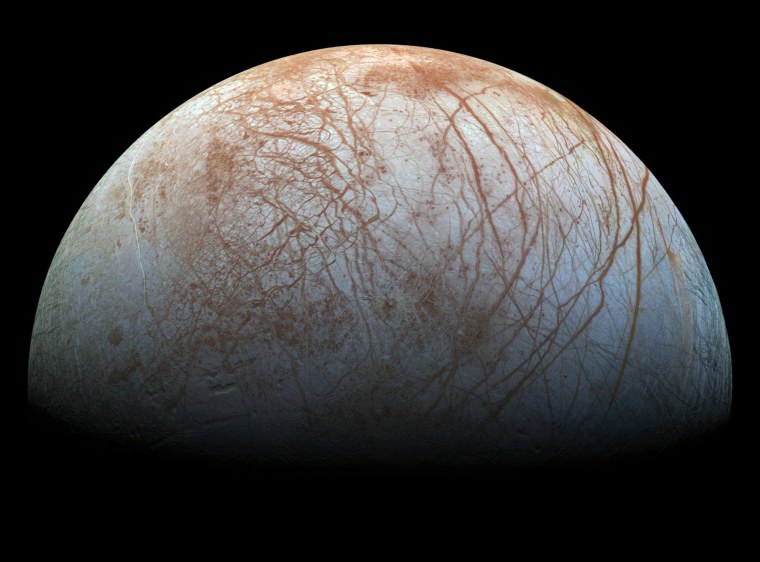
The case for life: All known life needs water, and Europa is literally awash in it. Beneath its outer shell of ice, estimated to be 10 to 15 miles thick, there is a vast global ocean three times the volume of all the oceans on Earth. Intense tides caused by Europa’s interaction with Jupiter and its other moons creates friction that generates heat, keeping the ocean warm.
But: No sunshine gets through the outer ice, and it’s not clear how much potential nutrients circulate from the surface to the ocean below. A new analysis of two-decade-old Galileo probe images by Britney Schmidt at Georgia Tech suggests there is a lot of mobility in the ice, which is good news for life. NASA’s upcoming Europa Clipper, slated to arrive in 2025, will provide more information. Real answers will have to await a lander, which could follow a few years later. It would extend a robot arm, collect surface samples, and seek out possible Europan microbes. Or, you know, a tentacle.
Enceladus
What it is: Another icy moon, like Europa but smaller and fiercer, in orbit around Saturn. It is just 313 miles across, about the width of Arizona.
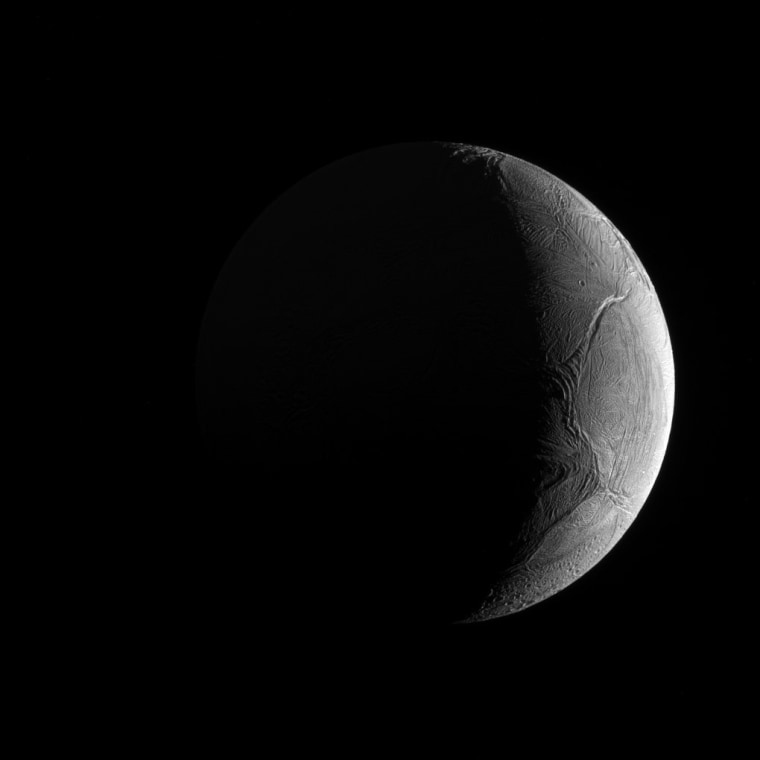
The case for life: Along with Europa, Enceladus has awoken scientists to a remarkable insight: The solar system is full of ocean worlds, but most of them have their oceans on the inside, buried under ice. Despite its puny size, Enceladus has all the appealing traits of Europa — and then some. Giant geysers shoot from its south pole; analyses of that escaping water shows that the underlying ocean is salty, alkaline, and laced with carbon compounds. The seafloor on Enceladus probably has hydrothermal vents — jets of hot, chemically rich water that some researchers speculate could have been the starting points for life on Earth. Carolyn Porco, head of imaging for the Cassini mission at Saturn, has joked that Enceladus might be home not just to microbes, but to a veritable alien sushi dinner.
But: The Cassini probe circling Saturn has been able to examine Enceladus only from afar, and its mission ends in September. There’s a concept for an Enceladus Life Finder probe to go back and dive into the geyser plumes, but nothing is actually funded. Write your representative!
Titan
What it is: Saturn’s largest moon, slightly bigger than Mercury, and the only moon in the solar system with a thick atmosphere.
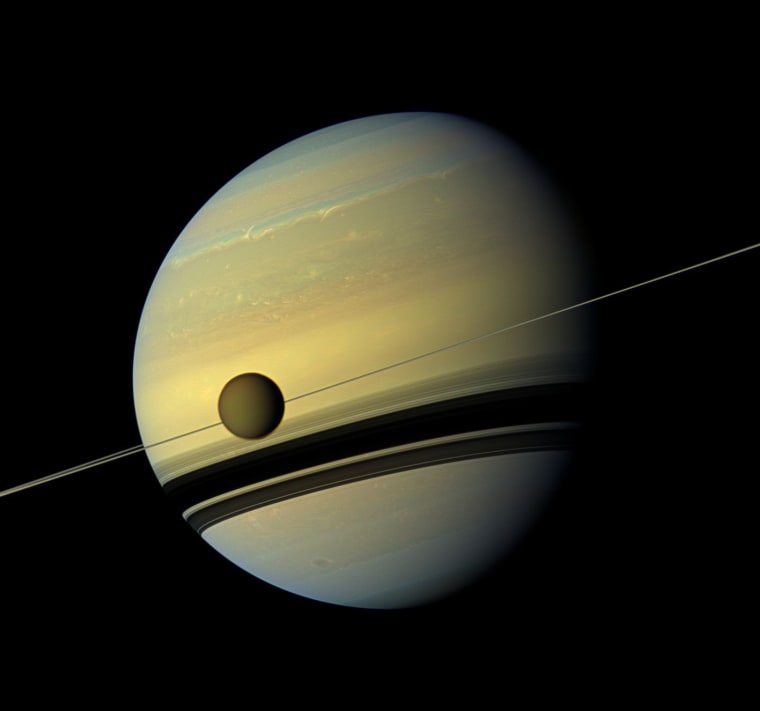
The case for life: Life is all about carbon-based chemistry, and so is Titan. Its air is laced with methane and capped with orange organic fog, like Los Angeles on a bad day. Its surface is dusted with thick dunes of tar, and at the poles it has lakes of ethane and methane — liquid natural gas.
But: This chemical wonderland is extremely cold, about -290 degrees Fahrenheit. That seems to rule out life as we know it, although meteorite impacts could create temporary water ponds on the surface. Also, more exotic kinds of life could potentially take hold in liquid methane, according to a recent study led by Jonathan Lunine of Cornell University. When Cassini first reached Saturn, it dropped a small probe called Huygens, on Titan. The probe sent back tantalizing images of the surface, but sparse information relevant to life. Unfortunately, in 2012 NASA nixed plans to send a boat exploring Titan’s lakes. A proposed Titan submarine is probably decades away.
Proxima Centauri B
What it is: An Earth-sized planet orbiting the nearest star beyond the sun, 4.24 light-years away in the southern constellation Centaurus.
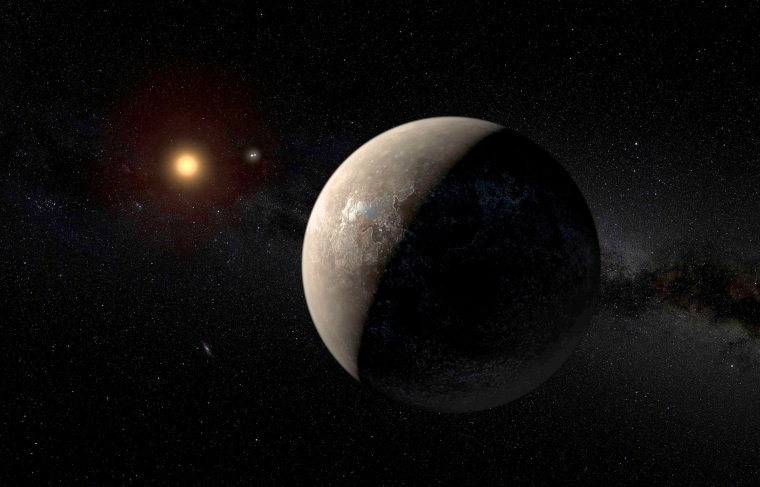
The case for life: Proxima B orbits in the “habitable zone,” meaning it gets the right amount of warmth from its star to have liquid water on its surface. The parent star (just called Proxima Centauri) is a red dwarf, much dimmer and cooler than our sun. Such dwarf stars live a very long time — up to trillions of years — and are exceptionally common. There could easily be 100 billion planets like Proxima B in the Milky Way, so this one world is key to taking measure of the amount of livable real estate out there.
But: Proxima B was discovered indirectly by its gravitational tug on its parent star, and observing the dim planet right next to the glare of its star will be hugely challenging; astronomers liken it to studying a firefly flitting by a searchlight. (Don’t even ask about trying to fly there.) Still, James Kasting of Penn State University is optimistic that upcoming Earth-based observatories, such as the European Extremely Large Telescope slated to open in 2024, will be able to suss out Proxima B’s chemical suitability for biology.
Trappist-1 System
What it is: An alien solar system with three Earth-size worlds in the habitable zone. It’s located 39 light-years away — right next door compared to the 100,000 light-year size of our galaxy.
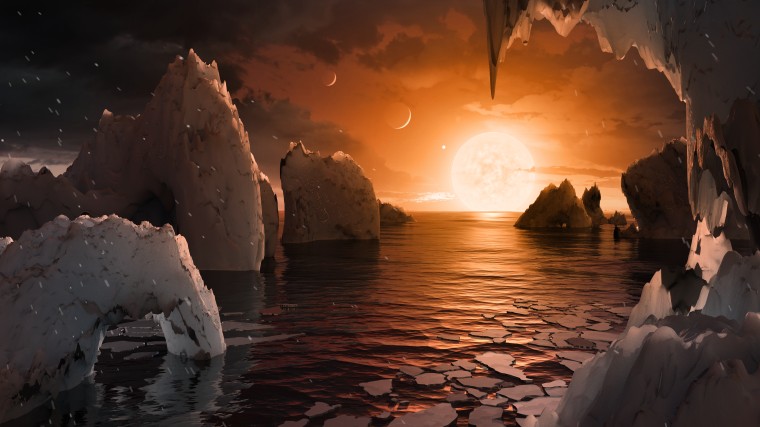
The case for life: Everything that’s promising about Proxima B is even more so here. Three planets in the habitable zone means three chances for genesis. (For now, the planets are merely designated Trappist 1-d, e, and f.) The entire Trappist-1 system is so small that if life arose on one planet, it would readily migrate to the others because of random meteorite strikes. Best of all, the entire system is aligned so that all of the planets pass in front of their star as seen from Earth. That means astronomers can view starlight streaming through their atmospheres, which greatly aids the search for so-called biosignatures — chemical indications of life.
But: Kasting worries that red dwarf stars like Proxima Centauri and Trappist-1 might boil away all of their planets’ water when they are young, and then sterilize them with intense flares of X-rays. NASA’s $8 billion James Webb Space Telescope, launching next year, should be able to see whether the Trappist-1 planets have atmospheres with water, methane, and oxygen. If so, that would refute Kasting’s doubts and greatly bolster the case for life.
Tabby’s Star (KIC 8462852)
What it is: A bizarre flickering star, first described by Louisiana State University astronomer Tabetha Boyajian (aka Tabby), about 1,300 light-years from Earth.
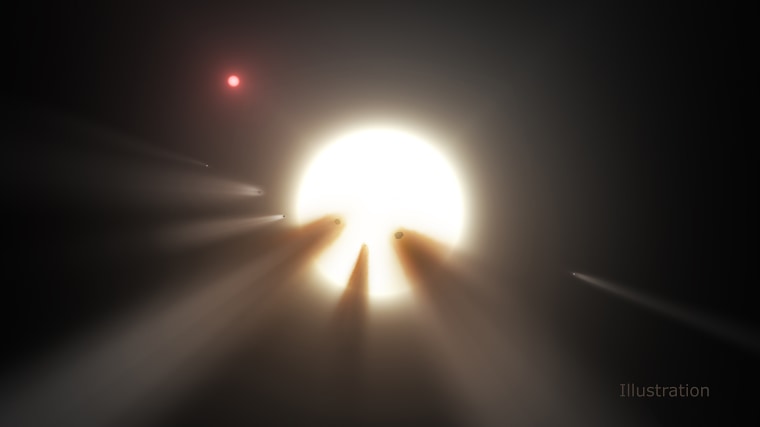
The case for life: Nothing about this star makes sense. It gets dimmer and brighter at seemingly random intervals. It also seems to be slowly but steadily becoming fainter — and yet there’s nothing about the star or any kind of surrounding material that would explain this behavior. Jason Wright of Penn State, who has studied the star extensively, keeps a list of possible explanations for its shenanigans. One of the items on his list set the Internet on fire: “alien megastructures.” If an advanced civilization built vast, irregular structures in orbit around their star, Wright noted, that could explain both the flickering and the gradual dimming.
But: No reputable scientist will shout “aliens!” until all other explanations have been ruled out, and we’re not nearly there yet. Boyajian is intensively observing the star now. If the dimming looks like it is caused by a big cloud of gas or dust, that would rule out ET. But if the star just flickers on and off, as if passing behind a wall, then things get really interesting.
Przybylski’s Star (HD 101065)
What it is: An ordinary-looking star that is chock-full of heavy elements — including, apparently, short-lived radioactive elements. It’s 370 light-years from home.
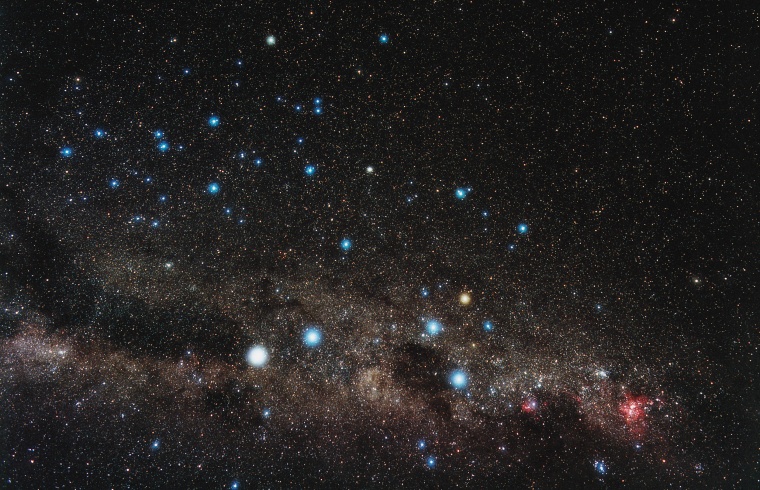
The case for life: This star seems to be dusted with elements not normally seen outside of laboratory nuclear experiments. So what are they doing there? In 1966, Carl Sagan and his Soviet colleague Iosif Shklovsky speculated that advanced aliens might sprinkle their star with unusual artificial elements as a way of signaling their presence to other civilizations around nearby stars. That eerily resembles what astronomers are seeing here. Synthetic elements could also be a waste byproduct of advanced interplanetary technology. While astronomers busily focused on searching for radio signals from ET, could they have stumbled across a chemical signal instead?
But: Przybylski’s Star (pronounced “she-BEEL-skee”) could also have an exotic but natural explanation: Vladimir Dzuba of the University of New South Wales, Australia, recently suggested that the star may be a natural repository of theoretical ultra-heavy quasi-stable elements not yet detected on Earth. There’s also a slight possibility that the studies of Przybylski’s Star are flat wrong. For now, it is one of the most intriguing SETI candidates in the universe.